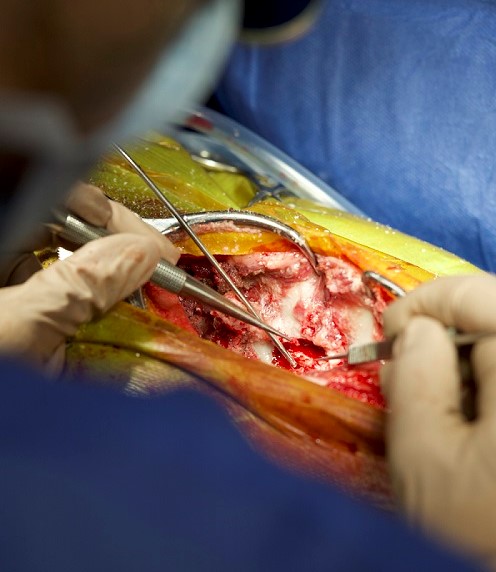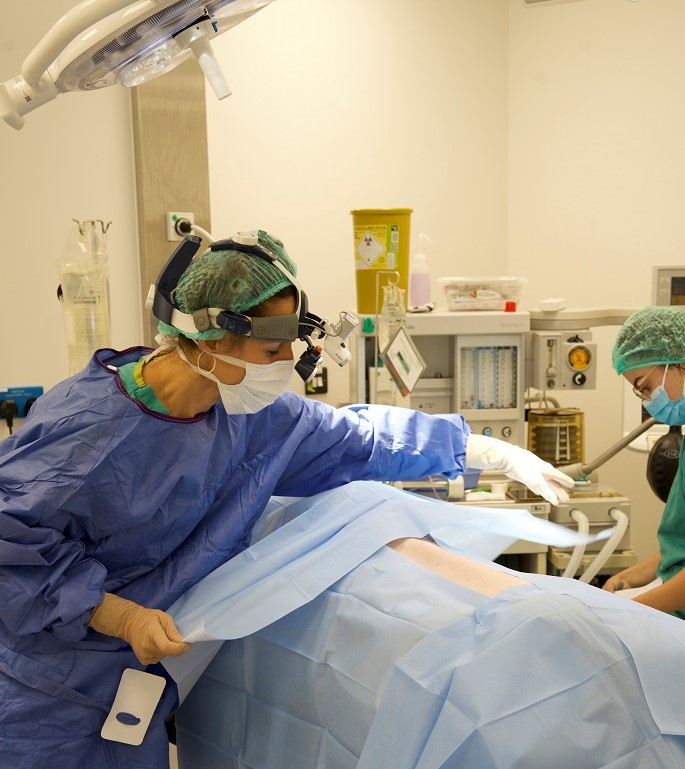
Introduction
The European College of Veterinary Neurology (ECVN) is the certifying organisation for specialists in veterinary neurology regulated by the European Board of Veterinary Specialisation (EBVS). ECVN is a non-profit organisation which functions to advance veterinary neurology by authenticating veterinarians as specialists in veterinary neurology and by advancing knowledge relating to the pathogenesis, diagnosis, therapy and the control of diseases affecting the nervous system of animals.
History of the College
The European Society of Veterinary Neurology (ESVN)
Since the nineteen-eighties a growing interest in veterinary specialisation in Europe existed which has fostered the creation of several specialty organisations. In September 1985, a group of veterinarians, active in the field of veterinary neurology, founded the European Society of Veterinary Neurology (ESVN) in Paris, France. The ESVN has served since then interlinked with the ECVN as a forum for veterinarians interested in all aspects of the nervous system of animals.
ESVN further has promoted research and scientific progress in the field of veterinary and comparative neurology to improve diagnosis, treatment and prevention of neurological disorders. An important objective is also training and continuing education in veterinary neurology. The adaptation of a European transnational specialisation system by the Advisory Committee for Veterinary Training of the European Union in 1991 inspired the ESVN to develop guidelines for the formal recognition of veterinary neurology as a specialty. It was recognised that from the view of the profession as well as the animal owner there is a need for special expertise in diagnosis and treatment of neurological diseases in animals and that such expertise should be subject to stringent quality control by defining precise requirements for training, knowledge and experience. The ESVN executive decided to initiate the process of formal specialisation in veterinary neurology.
The European College of Veterinary Neurology (ECVN)
During 1992 a set of criteria for de facto membership of the proposed College was established, and a call for applications for de facto specialist status in veterinary neurology was published in several European veterinary journals. An ad hoc credentials committee was appointed consisting of two past presidents of the ESVN (Prof. J. Mayhew, UK, and Prof. M. Vandevelde, Switzerland) and one Diplomate of the neurology chapter of the American College of Veterinary Internal Medicine: Prof J. Oliver (USA). This ad hoc committee was commissioned to screen the applicants seeking de facto membership. Prof. J. Griffiths (UK) was appointed as adjudicator to supervise the process independently from the ad hoc committee. The ESVN executive stressed that the process of selecting and appointing de facto Diplomates was a one time event which was not to be repeated in the future.
The selection of the candidates took place during the first half of 1993 and was based on a set of criteria related to training and experience in veterinary neurology amongst which academic teaching experience, research, and publications in the field of veterinary neurology were heavily weighted. The following de facto members were selected and proposed to the ESVN Executive Committee in June 1993: Bichsel P. (Switzerland), Hopkins A. (UK), Jaggy A. (Switzerland), Mascort J. (Spain), Moreau P. (France), Parker A. (USA), Le Couteur R. (USA), Poncelet L. (Belgium), Schwarz-Porsche D. (Germany), Skerritt G. (UK), Steinberg S. (USA), Tipold A. (Austria), Van Ham L. (Belgium), Wheeler S. (UK). The three American members were all Diplomates of the American College and were invited to join the European College to help establish a close liaison between European and American veterinary neurologists.
The candidates for de facto membership proposed by the ad hoc credentials committee were confirmed by the ESVN members at the occasion of the annual ESVN meeting in Newmarket (UK) September 1993. The members of the ad hoc committee were also elected as de facto members.
The de facto members founded the provisional college of veterinary neurology on the 29th September, 1993 in Newmarket. The Education (credentials) committee and the Examination committee were founded and composed of de facto members. It was decided to administer the ECVN and the ESVN by the same executive structure; the members of the Executive Committee must be Diplomates of the College, with the exception of one member at large who must be a member of the ESVN. The EBVS queried this and the member at large’s role is now the one of an observer at the Executive Committee meetings.
In 1993, EBVS was founded by five speciality groups: the European Society of Veterinary Internal Medicine (ESVIM), the European College of Veterinary Surgeons (ECVS), The European College of Veterinary Dermatology (ECVD), the European College of Veterinary Ophthalmology (ECVO) and the European Association of Veterinary Diagnostic Imaging (EAVDI). Therefore, it was also decided to apply for official recognition of the specialty to EBVS. This application was filed by S. Wheeler in March 1994. The ECVN was subsequently registered by the EBVS under provisional recognition and authorised to proceed as planned.
The de facto Diplomates were commissioned to create guidelines for specialist training as well as to finalise the Constitution and Bylaws of the provisional College. A provisional set of guidelines for certification in veterinary neurology was published in the annual newsletter 1994. This newsletter also contained a call for applications for the first examination of the ECVN. The deadline for sending such an application to the Education committee was April 30, 1994. An extensive set of guidelines, including a description of the scope and procedures of the examination was available to the interested candidates in the spring of 1994. The first examination took place at the annual ESVN meeting in Limoges (F) in September 1994. The Examination committee was chaired by Dr. A. Jaggy. The examination included a preliminary dissertation and a two day written, practical and oral part. Prof. J. Oliver, observed the examination procedures and results as observer/adviser of the American College. Six candidates passed the exam. In the subsequent years further examinations took place generally on the occasion of the annual ECVN/ESVN meeting. The examination format and the guidelines for admission to the certification examination (credentials) of the ECVN were adapted regularly to arrive at the present form. After 15 specialty examinations 83 veterinarians achieved successfully the ECVN Diplomate status. In addition, since its existence the ECVN appointed 19 diplomates by de facto (including founding diplomates and invited specialists) and 13 diplomates accepted due to national standing and equivalent qualifications.
Full recognition of ECVN by EBVS was achieved in 2002.

The re-accreditation system was introduced in 2002, but not accepted by EBVS, because it was not based on a credit-point system. It was adapted in 2003, this time with a credit point system. Provisional recognition for the re-accreditation was obtained by EBVS in 2005.
Since 2001 the Journal of Veterinary Internal Medicine is the official journal of the ECVN. Since 2002 the Journal of Veterinary Internal Medicine publishes the abstracts of the ECVN annual meeting in ACVIM format. The steady growth, development and international recognition of the ECVN continues and is partly reflected in the increasing number of delegates who attend the annual joint meeting of ECVN and ESVN each September. At the 2010 meeting around 250 delegates attended. An increasing number of ACVIM (Neurology) Diplomate holders attend the annual meetings.
In 2001, the “John Presthus Award” was introduced in memory of the treasurer of the ECVN/ESVN John Presthus. This award is given to a young person performing veterinary neurology training and presenting the best platform presentation during the annual meeting. The “Bayer Award” was introduced in 2002. This award is given to a young person performing veterinary neurology training and presenting the best poster presentation during the annual meeting.
In 2006, the ECVN listserver has joined the internet platform and discussion forum of ACVIM (Neurology) on the Veterinary Information Network (VIN). This has increased the knowledge transfer between both Neurology colleges and strengthened the recognition of the ECVN.
In 2010, the first European Veterinary Neuroscience & Advanced Clinical Neurology/Neurosurgery Course took place at the Faculty of Veterinary Medicine of the University of Bologna, Italy organised by the former ECVN president Prof. Gualtiero Gandini. In addition to the two weeks main course, the committee organised the “Veterinary diagnostic imaging advanced course” to take place on the weekend before the neuroscience course and the “Veterinary neuropathology advanced course” that took place over the weekend after the main course. These biennial 2-week Advanced Neuroscience courses used to be held in the United States under the umbrella of ACVIM (Neurology). The target audience was residents (ECVN, ACVIM [Neurology]), academic staff involved in veterinary neurology, veterinary surgeons with specific interest in veterinary neurology. Based on the success of the first course this course will be organised in future on a biennial basis either by ECVN or ACVIM (Neurology).

